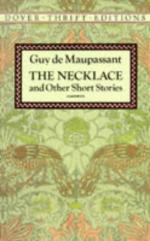|
This section contains 1,302 words (approx. 5 pages at 300 words per page) |

|
Structural and Textural Irony
Summary:
The use of literary elements, particularly the use of irony, can transform an ordinary story into a great work of literature. In Zora Neale Hurston's "Sweat," William Sydney Porter's "The Last Leaf," Guy de Maupassant's "The Necklace," and Nathaniel Hawthorne's "The Birthmark," both structural and textual irony serve to draw readers into each story, to express an underlying moral warning, and to provoke discussion through added depth and purpose.
Literary elements such as metaphors, similes, alliteration, the use of personification, and the use of irony are primary tools and building blocks for great literature. With the incorporation of literary elements, an insignificant story of occurrences can be transformed into a literary work of art presenting depth and purpose to its audience. While many short stories are flooded with a number of various literary elements, Zora Neale Hurston's "Sweat", William Sydney Porter's "The Last Leaf", Guy de Maupassant's "The Necklace", and Nathaniel Hawthorn's "The Birthmark" are prime examples of short stories that are built around the distinct element of irony. Irony is emphasized throughout these four short stories to draw the reader into the story, express an underlying moral warning, and establish depth that in turn prompts discussion.
A short story is exactly that, short. With that said, the previous four authors waste no time at all incorporating...
|
This section contains 1,302 words (approx. 5 pages at 300 words per page) |

|


